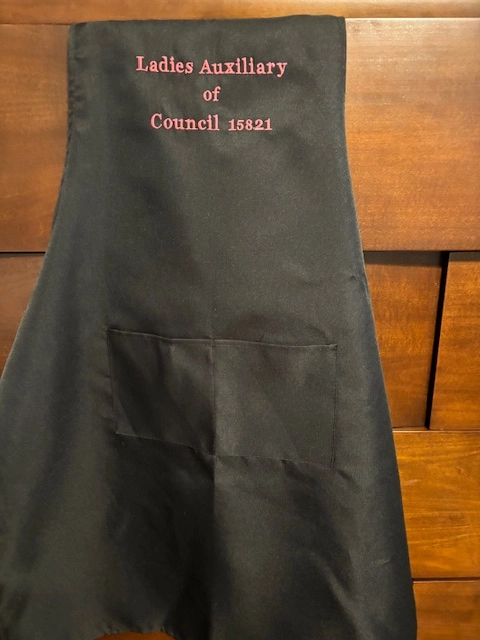Classy Monogramming on Towels for a Touch of Luxury
Classy Monogramming on Towels for a Touch of Luxury
Blog Article
The Art of Custom-made Embroidery: Unlocking the Secrets to Creating One-of-a-kind and Remarkable Styles
The secrets to producing custom-made needlework designs that captivate the eye and leave a lasting perception lie in a fragile balance of method, creative thinking, and interest to detail. As we dig right into the globe of custom-made embroidery, we discover the nuanced interplay in between string option, stitch complexity, and layout personalization that boosts a simple garment to a work of art.
Selecting the Right Needlework Threads
When picking needlework strings, what essential variables should you consider to make sure the most effective outcomes for your custom styles? The option of embroidery string is critical in figuring out the last end result of your stitched layout. Among the key considerations is the material of the string. Different products such as cotton, polyester, rayon, and silk supply differing degrees of luster, durability, and appearance. It is necessary to choose a thread product that complements the textile you are stitching on and lines up with the wanted appearance of the design.
Thicker threads can add dimension and appearance to your style, while finer threads are excellent for detailed information and small text. Furthermore, considering the shade fastness and washability of the thread is crucial to make sure that your customized styles keep their quality and vibrancy over time.
Checking Out Different Stitch Strategies
To explore the realm of 'Checking out Various Stitch Methods', one need to realize the details and subtleties that each sewing technique offers the art of embroidery. Different stitch methods not only add aesthetic passion however also add to the overall appearance and dimension of the design. One popular stitch method is the satin stitch, which includes very closely packed parallel stitches to produce a smooth and glossy surface, suitable for completing forms and producing bold describes.
On the other hand, the backstitch is a versatile technique commonly made use of for describing and including fine details. It entails sewing in reverse to produce a strong line of needlework. In addition, the French knot stitch includes a responsive component to styles, best for producing textured accents like flower centers or attractive touches.
Exploring various stitch methods enables embroiderers to have fun with light, darkness, and deepness within their layouts, boosting the aesthetic charm and artistic top quality of their needlework tasks. By grasping different stitching methods, one can unlock unlimited opportunities for producing one-of-a-kind and remarkable customized embroidery items.
Incorporating Personalized Design Aspects
Having explored the details of different stitch strategies such as the satin stitch, backstitch, and French knot, the emphasis currently moves towards integrating personalized layout components in customized needlework jobs. Customized layout components play an essential function in making embroidery projects absolutely unique and unforgettable. One way to integrate customization is by adding initials, names, or significant days to the style. This not only adds a tailored touch however likewise boosts the sentimental value of the embroidery item.
One more way to include customized design aspects is by consisting of signs or concepts that hold special meaning to the recipient or mirror their rate of interests and character. site web For instance, integrating a favored blossom, animal, or hobby-related icon can make the needlework style a lot more purposeful and tailored. In addition, choosing shades that reverberate with the recipient or line up with the intended theme can even more enhance the customization of the embroidery task.
Mastering the Art of Shade Sychronisation

One key element of color control is comprehending shade theory. This consists of knowing just how different shades engage with why not try here each various other, the feelings they convey, and exactly how they can be incorporated to produce visually enticing styles. By using color theory concepts, embroiderers can produce unified shade combinations that improve the general appearance of the design.
Additionally, paying focus to comparison is critical in shade control. Utilizing contrasting colors can help particular components of the style pop, boost legibility, and create a visually vibrant embroidery item. By mastering the art of color coordination, embroiderers can elevate their layouts and produce remarkable pieces that reverberate with clients and viewers alike.
Enhancing Texture With Advanced Needlework Stitches

French knots, as an example, are perfect for including tiny, raised dots to your design, simulating the appearance of beads or creating a textured surface area. Bullion knots, on the various other hand, can be made use of to develop twisted, ropelike components that include a glamorous feel to the embroidery. Seed sewing involves little, scattered stitches that can fill out locations with a multicolor structure, while turkey work creates fluffy, dimensional accents similar to animal fur or vegetation. Exploring with these advanced needlework stitches enables you to push the boundaries of typical embroidery and create truly unique and visually attractive structures in your layouts.
Conclusion
Finally, the art of custom embroidery includes a mix of choosing the ideal strings, checking out various stitch strategies, incorporating individualized design components, grasping shade sychronisation, and improving texture with sophisticated stitches. By understanding and applying these crucial aspects, embroiderers can produce unique and unforgettable designs that showcase their creative thinking and skill. Embroidery fanatics can unlock the secrets to producing lovely and bespoke items that stand out and leave a lasting perception.
Report this page